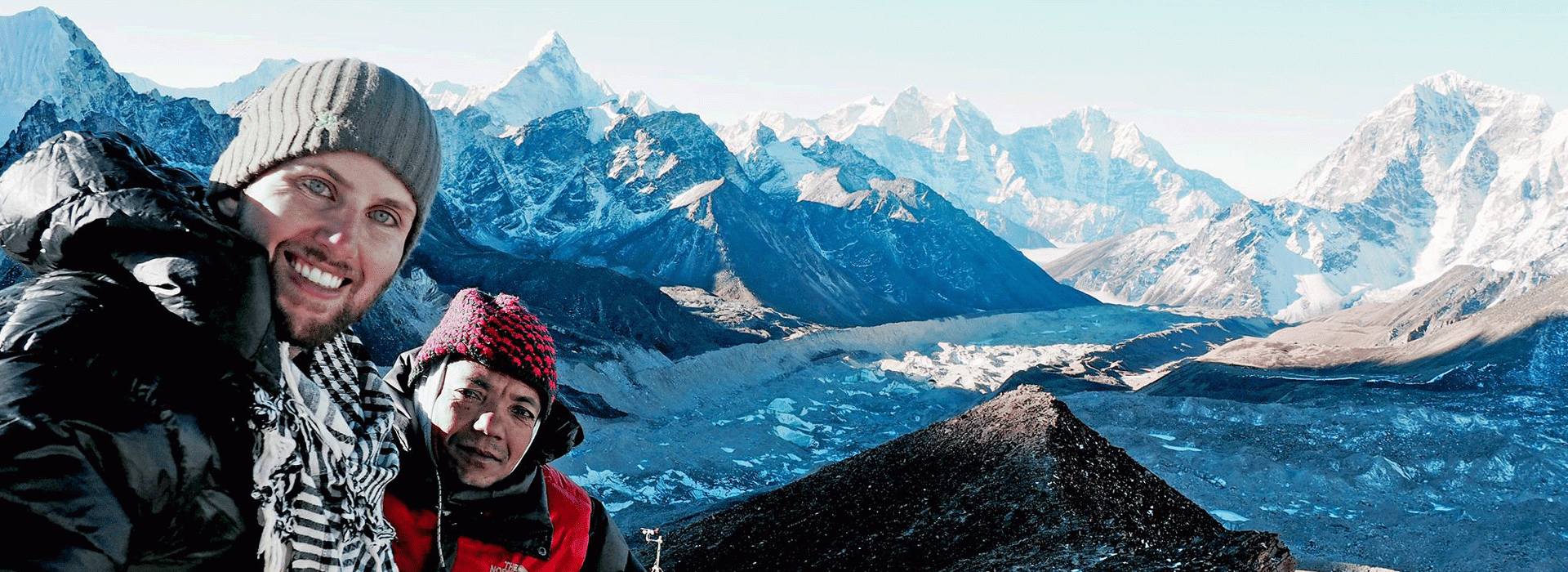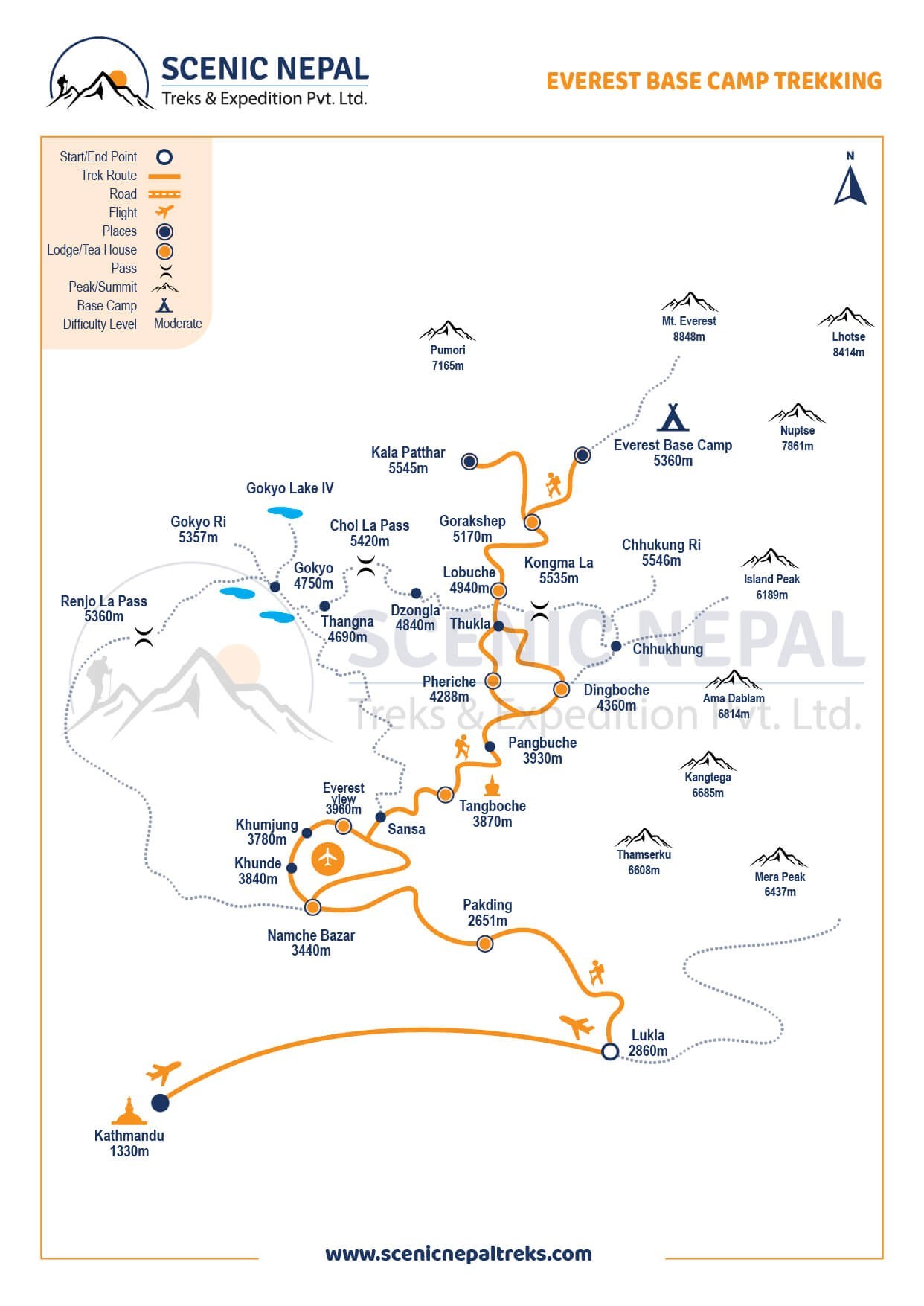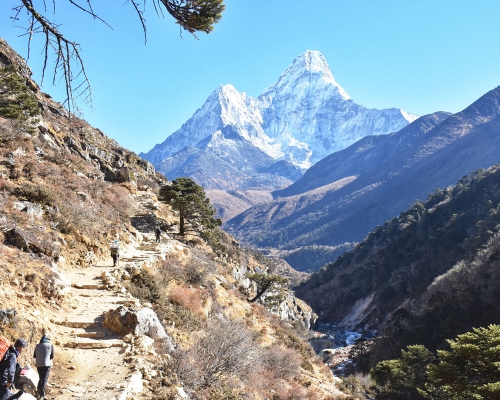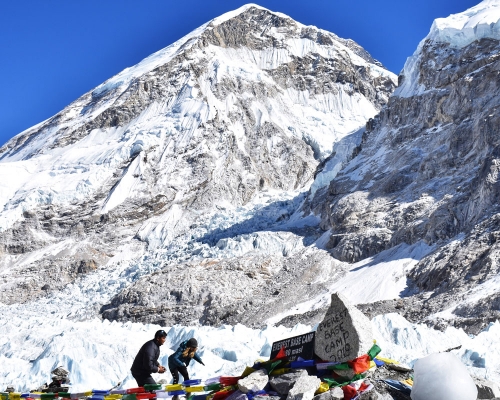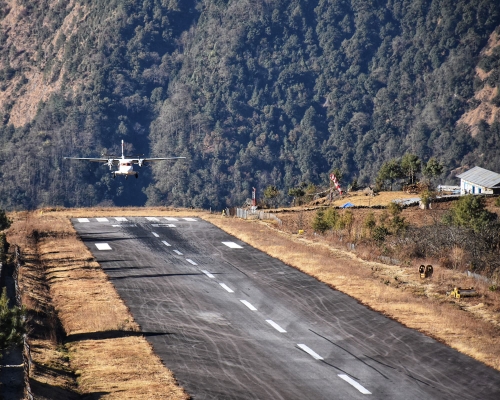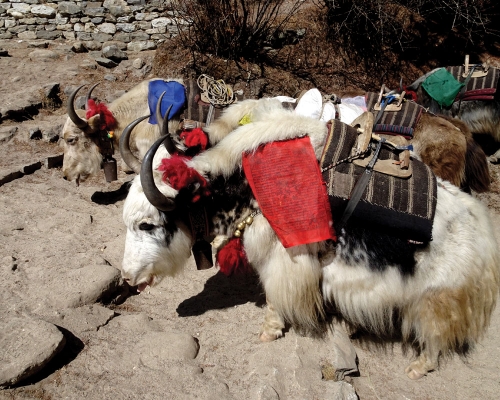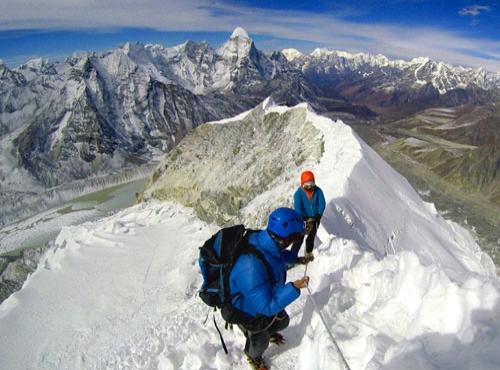“Go where you feel most alive!”
Did you know Trekking to Everest Base Camp is one of the most popular hikes in the world? Getting at the base of the top of the world at 5360 m offers you an amazing feeling ever. For those who have very limited time in Nepal, Scenic Nepal Treks offers our 13 Days Everest Base Camp Trek. If you have limited time, You may have to look at our regular Program Everest Base Camp- 14 Days.
The Everest Base Camp trek is a remarkable adventure that takes you to the base camp of Mount Everest, the world's highest mountain. It is not just about reaching the foothill of the world’s tallest mountain but It is an amalgamation of high-altitude topographical experience and people’s cultural understanding. Too many superlative activities do make it an exciting prospect of finding the inner self of your traveling desires. From adventure to creation of momentous events EBC trek tops all.13 days Everest Base Camp is a customized trekking itinerary by Scenic Nepal Treks which is a bit different than our regular14 days Mount Everest Base Camp Hiking Itinerary. We have prepared this trekking itinerary for those adventures lovers who have limited time and strong planning to doing Base Camp Trek in Nepal.
- Starting Point: The trek usually begins with a scenic flight from Kathmandu to Lukla, a small mountain airstrip located at an elevation of 2,860 meters (9,383 feet). Lukla is the gateway to the Everest region and serves as the starting point for the trek.
- Namche Bazaar: From Lukla, the trail winds through picturesque Sherpa villages and lush forests, gradually ascending to Namche Bazaar. Namche Bazaar is a vibrant trading hub and the unofficial capital of the Khumbu region. It is nestled in a natural amphitheater and offers stunning views of Everest and its neighboring peaks.
- Acclimatization: To adapt to the increasing altitude, acclimatization days are included in the itinerary. These rest days allow trekkers to explore the surroundings and hike to higher elevations before descending to sleep at a lower altitude. During the acclimatization days, trekkers may visit neighboring villages, explore the Khumbu Glacier, or hike to viewpoints for panoramic views of the mountains.
- Tengboche and Monasteries: Continuing the trek, you pass through Tengboche, which is famous for its ancient Buddhist monastery. Tengboche Monastery is one of the most significant monasteries in the region and offers a tranquil setting amidst spectacular mountain vistas.
- Dingboche and Lobuche: The trail then takes you to Dingboche and Lobuche, both located at higher altitudes. These villages provide breathtaking views of mountains like Ama Dablam, Nuptse, and Thamserku. The terrain becomes more rugged, and the air thinner as you ascend further.
- Gorak Shep and Everest Base Camp: The final stretch of the trek takes you to Gorak Shep, a small settlement situated at the edge of a frozen lakebed. From Gorak Shep, trekkers make their way to Everest Base Camp, which sits at an altitude of 5,364 meters (17,598 feet). Everest Base Camp is the starting point for mountaineers attempting to climb Everest, and reaching there is a significant achievement in itself.
- Kala Patthar: As an optional side trip, many trekkers ascend to Kala Patthar, a viewpoint located at an elevation of 5,545 meters (18,192 feet). From here, you can witness one of the most breathtaking panoramas, including an up-close view of Mount Everest and its neighboring peaks, illuminated by the first rays of sunlight.
- Return Journey: After experiencing the magnificence of Everest Base Camp and the surrounding mountains, the return journey follows a similar route back to Lukla. Trekkers can retrace their steps while reminiscing about their incredible journey.
Throughout the trek, trekkers stay in teahouses or lodges that offer basic accommodation and meals. These teahouses provide a cozy place to rest, enjoy warm meals, and socialize with fellow trekkers. The trek requires physical fitness, endurance, and proper acclimatization to the altitude, making it a challenging but highly rewarding adventure.
Please note that the specific itinerary and duration of the trek may vary depending on the trekking agency, weather conditions, and individual preferences. It is essential to plan and prepare well in advance, considering the advice of experienced guides and ensuring you have the necessary equipment and permits for a safe and enjoyable experience.
Everest Base Camp Challenges and Physical Fitness:
The Everest Base Camp trek presents several challenges, and a good level of physical fitness is crucial to overcome them. Here are some of the main challenges you may encounter:
- High Altitude: One of the primary challenges of the Everest Base Camp trek is the high altitude. As you ascend, the oxygen levels decrease, and your body needs time to acclimatize to the thin air. Altitude sickness is a significant concern, and it can range from mild symptoms like headache and fatigue to more severe conditions. Adequate acclimatization, proper hydration, and a gradual ascent are essential to minimize the risk of altitude-related illnesses.
- Steep Ascents and Descents: The trek involves steep ascents and descents along narrow trails. You will encounter uphill climbs and steep downhill sections, which can be physically demanding, especially at higher altitudes. Building strength and endurance through cardiovascular exercises, hiking, and stair climbing can help prepare your body for these challenges.
- Length and Duration: The Everest Base Camp trek typically takes around 12-14 days, excluding travel time. Each day involves several hours of walking, covering distances ranging from 6 to 15 kilometers (4 to 9 miles). Endurance training, including long-distance hikes or walks, can help prepare your body for the duration of the trek.
- Weather Conditions: The weather in the Everest region can be unpredictable and harsh, particularly at higher altitudes. You may encounter cold temperatures, strong winds, and occasional snowfall, even during the trekking seasons. Proper layering of clothing and carrying appropriate gear for varying weather conditions is essential.
- Remote and Basic Facilities: The trek takes you through remote areas with limited facilities. Accommodation in teahouses or lodges provides basic amenities, but don't expect luxurious comforts. Basic toilet facilities and cold showers are common along the trail. Being mentally prepared for rustic conditions can make the journey more manageable.
To prepare for the physical challenges of the Everest Base Camp trek, it is recommended to engage in regular physical exercise and training several months before the trek. This can include activities such as hiking, jogging, cycling, swimming, and strength training. Focus on building endurance, cardiovascular fitness, leg strength, and core stability.
Additionally, consult with a healthcare professional before embarking on the trek to assess your overall health and ensure you are fit for high-altitude trekking. Remember to listen to your body during the trek, pace yourself, stay hydrated, and take rest days for acclimatization. Hiring a knowledgeable guide or joining a reputable trekking agency can provide valuable support and guidance throughout the journey.
